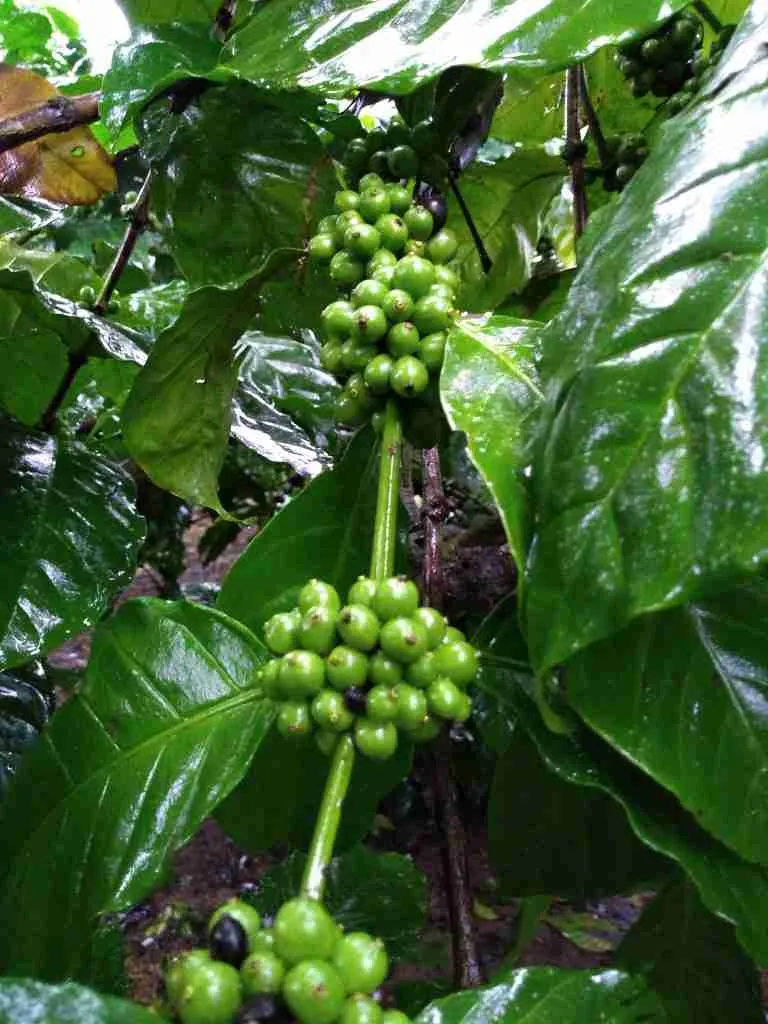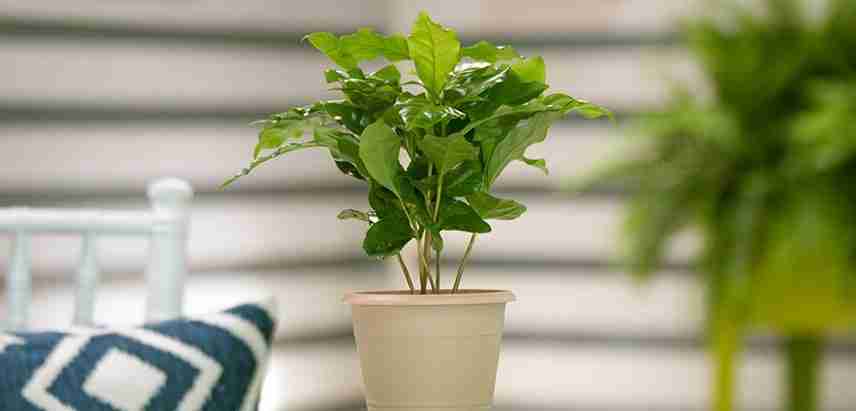
I bet you didn’t know that you can grow coffee beans at home. It is a long and arduous task, but it is possible! Growing your own beans and eventually brewing it into a cup of coffee will be the most rewarding activity you can do at home.
To grow coffee beans at home you will need coffee cherries, but if they are not available you can buy green coffee from a supplier. It is essential to buy fresh beans of a recent crop or harvest so they will be still be able to germinate when they reach your home.
Germinating Green Coffee Beans at Home.
Green coffee beans will be able to germinate for almost four months after being harvested. However, the longer you wait the lower the germination rate of the beans will be.
To germinate your coffee seeds, first, you must soak them in water for 24 hours. Then, leave the beans in a damp medium such as sand or vermiculite and water it twice a day. Make sure there is good drainage for your coffee beans. Fresh seeds should take around 2 – 3 months to germinate while older seeds can take up to 6 months to germinate. Be patient with your coffee plant!
Starting the Growing Process

Once you see the coffee seed germinate you have to transfer it to a friable loam soil with high humus content. Bury it 1.25 cm deep. Optionally, you can add manure, bone meal, or dried blood to help your plant grow. If you do not have this type of soil available choose a porous soil that will easily drain. Make sure you place your bean flat side down and lightly cover your bean with soil. Do not compact the soil.
You have to water the seed regularly every day. Make sure the soil remains damp, but not too wet at all times. The coffee plant will grow slowly and slowly grow over time. You can transfer it to acidic soil with low pH and high nitrogen content (like blueberries).
Coffee plants naturally thrive in warmer temperatures. If you live outside the Tropic belt it will be took cold to grow your coffee plant outdoors. However, coffee plants will thrive indoors with artificial light. Once the coffee plants develops into the tree you only need to water it twice a week and make sure the soil is moist, but well drained.
Coffee Plant Care During Changing Seasons

Once your coffee plant has grown into a small tree you can expect flowering and cherries to form after two to three years of growth. If you have an arabica coffee plant it is self-pollinating so it will fruit and flower by itself. These cherries will have coffee beans within that you can harvest and process into coffee beans for brewing.
To get your coffee plant to flower wait until Winter and reduce the amount of water it gets for around 2 – 3 months. Water it around once a week. When Spring rolls around water the plant normally and this will signal the plant to produce flower and cherries.
All you have to do after that is harvest, pulp the fruit, ferment, dry, and roast. Then you will have a home grown & brewed coffee.
Common Problems and Pests
Yellowing Leaves
If your coffee plant has yellowing leaves that means you are either watering it too much or too little. Make sure you feel the soil and water accordingly.
If there are brown spots in addition to the yellowing this is a sign that you are underwatering your plant.
Dropping Leaves
If your coffee plant has been dropping a few leaves here and there you should not be worried. Older leaves will fall off naturally. However, if your coffee plant is dropping new leaves quickly it may be due to not enough water or a change in temperature.
Low growth rate or small pale leaves
If your plant has been growing very slowly and has been growing small pale leaves it may be because it has not been getting enough sunlight. Move it to a sunnier area and water it regularly.
Brown edges around leaves
If your leaves have a brown edge it means that your plant is over watered or the soil is not draining properly. It can also be a sign that it is not humid enough for your plant. To solve this leave your plant in a green house and make sure the soil is draining properly and water it less.
Pests and Diseases
- Leaf fungal diseases (Hemilaeia vastatrix = coffee rust)
- Nematodes invasion of the roots (eg Meloidogyne coffeicola)
- Insect attack of the leaf (Leucoptera coffeella = bicho miniero)
- Insect attack of the cherry (Hypothenemus hampeii = coffee borer)
- Fungal disease of the seed (eg Colletotrichum coffeanum = coffee berry disease)
How Many Coffee Plants You Need

In short, you need 16 fully grown coffee trees to supply the average coffee drinker’s coffee addiction. The average coffee drinker drinks 3.2 cups of coffee a day. This means they drink 1,168 cups of coffee a year. With one pound of roasted coffee beans, you can make 45 cups of coffee. So that means the average coffee drinker uses 25.95 pounds of roasted coffee beans per year. Roasting coffee beans results in a 20% reduction in mass so you will need 32.44 pounds of green coffee per year for one coffee drinker. The average fully grown coffee tree produces 10 pounds of coffee cherries per year which is equal to 2 pounds of green beans. If you do the math you need 16 coffee trees to supply yourself with the coffee beans for an entire year. This will be around 16 m^2 of farming space.
Wrapping Up
Do you want to try this yourself? Have you started growing coffee plants at home and want to show off? Comment below and leave others some tips and trips to grow their own coffee beans at home! If you’ve grown your own green beans learn how to roast your beans at home!


I’m glad to know that it’ll take me 16 plants to supply my habit. I have 20 plants that are several years old now and are between about 2-1/2′ & 4-1/2′ tall above soil line. One of them made flowers for the first time this spring. They are all sending out new branches and leaves, a beautiful light golden brown. I bring them inside for the winter as they seem to dislike temps below 46 degrees. They’re starting to take up lots of room so I have them all bunched together. Maybe I can buy my neighbor’s back yard. I live in deep south Louisiana and am wondering if the temps here along with the sun is too much and if so, should they get more shade than sun?
Coffee plants actually naturally grow in indirect sunlight because they are understory plants (the understory is the underlying layer of vegetation in a forest or wooded area). They can survive in direct sun, but if you notice any browning in the leaves move them indoors or under your porch.